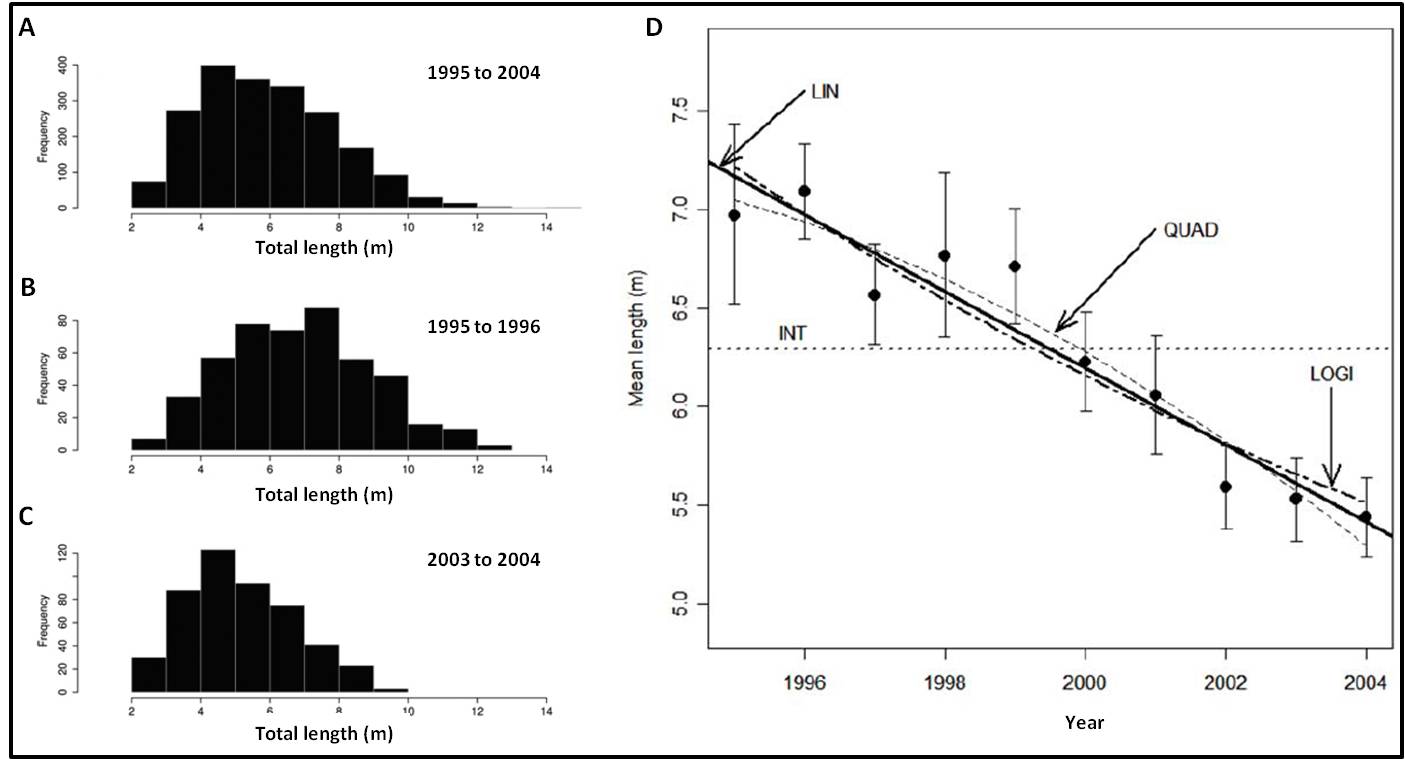Home > Browse by Themes > Biodiversity > Decline in whale shark size at Ningaloo Reef
Decline in whale shark size at Ningaloo Reef
- Australian Institute of Marine Science
- Australian Institute of Marine Science
The Ningaloo super-population of whale sharks (Rhincodon typus) has been shown to part of a wider Indian Ocean whale shark stock that is likely to encompass much of the south eastern Indian Ocean and the waters of South East Asia. While whale shark sightings are on the rise at Ningaloo, the whale shark population has experienced known exploitation in the greater Indian Ocean basin – resulting in a hypothesis that over-exploitation of whale sharks in the greater Indian Ocean basin would result in a decline in larger (older) individuals.
The aggregation of whale sharks at Ningaloo Reef has resulted in a well established ecotourism industry that has recorded the location, sex, and length for most whale shark individuals encountered since 1995. This large sightings dataset collected by the ecotourism industry offers insight into the Ningaloo aggregation’s demography and population status – allowing for a test of the over-exploitation hypothesis.
Using whale shark numbers from the peak months of April and May, a total of 1333 records had estimates of total length and sex from 1995 to 2004. The overall length-frequency distribution for 1995 to 2004 was moderately skewed to right (Figure 1A) – suggesting a largely juvenile aggregation. Moreover, a comparison of the length frequency distribution from 1995 to 1996 (Figure 1B) to 2003 to 2004 (Figure 1C) shows a marked shift of the frequency distribution to dominance by smaller (< 6 m total length) individuals with few large individuals. In addition, of four models tested (intercept – INT; linear – LIN; quadratic – QUAD; logistic – LOGI), the annual mean estimates of total length showed a strong linear decline with year, explaining over 91 % of the deviance (LIN; Figure 1D). In 1995, whale sharks averaged 7.0 m total length, and in 2004, whale sharks averaged only 5.4 m (Figure 1D).
The marked linear reduction in mean size provides empirical confirmation that larger individuals are being lost from the Ningaloo Reef aggregation – a result that is consistent with the hypothesis that a human source of mortality is driving the decline.
For more detailed information on this study, see Meekan M, Speed C, Planes S, McLean C, Bradshaw C (2008), or contact the corresponding author, Dr Mark Meekan.
Dataset details
| Custodian | Dr Mark Meekan |
| Owner institution | Australian Institute of Marine Science (http://www.aims.gov.au/) |
| Spatial extent | Muiron Islands (21° 39' S, 114° 22' E) to Red Bluff (24° 01' S, 113° 25' E) |
| Data collection | 1995 to 2004 |
| Copyright | Copyright remains with the data owner(s) |
| Reference | Click here |








